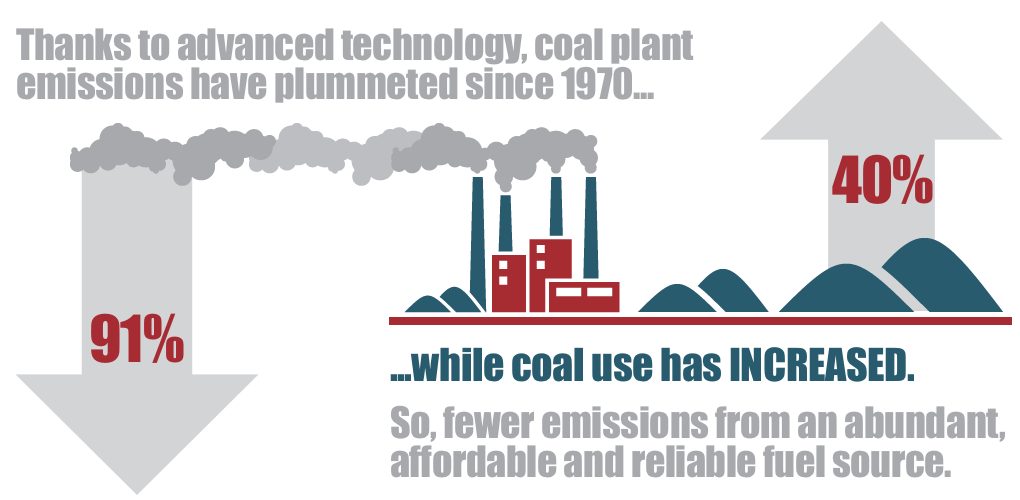
Advancing Coal Technologies
September 27, 2017
From all the news coverage it’s getting, National Clean Energy Week appears to be a carefully kept secret, trumped by NFL protests, a Senate primary and Puerto Rico’s dystopia. That’s a pity. Exciting things are happening in clean energy technologies and the global market they serve.
Renewables understandably get star billing in this discussion, but maybe the more important but surely overlooked developments are occurring in the fossil energy sector.
Start here in the U.S. Thanks to scrubbers and other combustion technologies, U.S. coal plant emissions have plummeted 91 percent since 1970. Not because we’ve used less coal; over the same period (1970-2016) coal use climbed by almost 40 percent. So, fewer emissions from an abundant, reliable and affordable source of power.
We’re on the cusp of more dramatic reductions. For example, the Prairie State Energy Plant in Marissa, Illinois bristles with advanced technologies that remove 85 percent of NOx, 98 percent of SO2, 90 percent of mercury and 99 percent of PM. All the while using less coal per generated electron thanks to much higher plant efficiency.
What about carbon emissions? Good question: every 1 percent improvement in the efficiency of a conventional coal plant yields two to three times the reduction in CO2. High efficiency, low emissions technologies like advanced ultra-supercritical – now being deployed in Asia, Europe and Oceana – reduce CO2 emissions by driving up steam temperatures (from 550° C for a conventional plant to 700° C) and driving down coal consumption per kWh. Smart.
Consider the potential. Nudging up the average global efficiency rate of coal-fired plants from 33 percent to 40 percent would remove the equivalent of India’s annual CO2 emissions. That two gigatons of CO2 saved equals the entire volume sequestered by the EU’s Emissions Trading Scheme over 53 years. It’s enough to create doubt about our global carbon priorities.
Green activists greeted Clean Energy Week by barring coal from the festivities, continuing an irrational opposition to advanced coal technologies. The organization 350.org called them “dangerous and dirty.” But the cost of this doctrinal purity is high. The world will continue to use coal more than any other fuel source to power its economy and bring developing countries out of energy poverty. Chinese companies alone are reportedly building 700 coal plants throughout Asia. Altogether, the World Coal Association estimates more than 1.1 Terawatts of new coal capacity is likely to come on line by 2040.
Saudi Arabia now allows women to drive. Maybe the green movement will allow the world to embrace a comprehensive suite of clean energy solutions.
- On September 27, 2017
